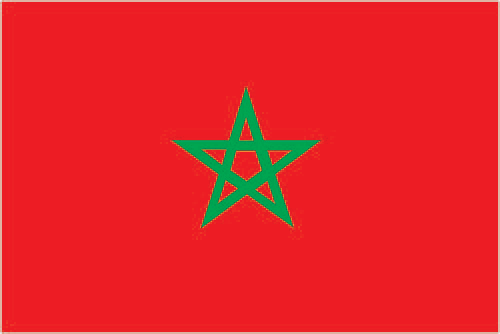
Morocco has capitalized on its proximity to Europe and relatively low labor costs to build a diverse, open, market-oriented economy. In the 1980s Morocco was a heavily indebted country before pursuing austerity measures and pro-market reforms, overseen by the IMF. Since taking the throne in 1999, King MOHAMMED VI has presided over a stable economy marked by steady growth, low inflation, and gradually falling unemployment, although a poor harvest and economic difficulties in Europe contributed to an economic slowdown in 2012. Industrial development strategies and infrastructure improvements - most visibly illustrated by a new port and free trade zone near Tangier - are improving Morocco's competitiveness. Morocco also seeks to expand its renewable energy capacity with a goal of making renewable 40% of electricity output by 2020. Key sectors of the economy include agriculture, tourism, phosphates, textiles, apparel, and subcomponents. To boost exports, Morocco entered into a bilateral Free Trade Agreement with the United States in 2006 and an Advanced Status agreement with the European Union in 2008. Despite Morocco's economic progress, the country suffers from high unemployment, poverty, and illiteracy, particularly in rural areas. In 2011 and 2012, high prices on fuel - which is subsidized and almost entirely imported - strained the government's budget and widened the country's current account deficit. In the fall of 2013, Morocco capped some of its fuel subsidies in an effort to gradually reduce the country’s large budgetary deficit. Key economic challenges for Morocco include fighting corruption and reforming the education system, the judiciary, and the government's costly subsidy program.
$180 billion (2013 est.)
country comparison to the world: 60
$171.2 billion (2012 est.)
$166.7 billion (2011 est.)
note: data are in 2013 US dollars
5.1% (2013 est.)
country comparison to the world: 55
2.7% (2012 est.)
5% (2011 est.)
$5,500 (2013 est.)
country comparison to the world: 156
$5,300 (2012 est.)
$5,200 (2011 est.)
note: data are in 2013 US dollars
agriculture: 15.1%
industry: 31.7%
services: 53.2% (2012 est.)
15% (2007 est.)
2.5% (2013 est.)
country comparison to the world: 95
1.2% (2012 est.)
11.73 million (2013 est.)
country comparison to the world: 46
agriculture: 44.6%
industry: 19.8%
services: 35.5% (2006 est.)
9.5% (2013 est.)
country comparison to the world: 103 9% (2012 est.)
phosphate mining and processing, food processing, leather goods, textiles, construction, energy, tourism
1.2% (2013 est.)
country comparison to the world: 141